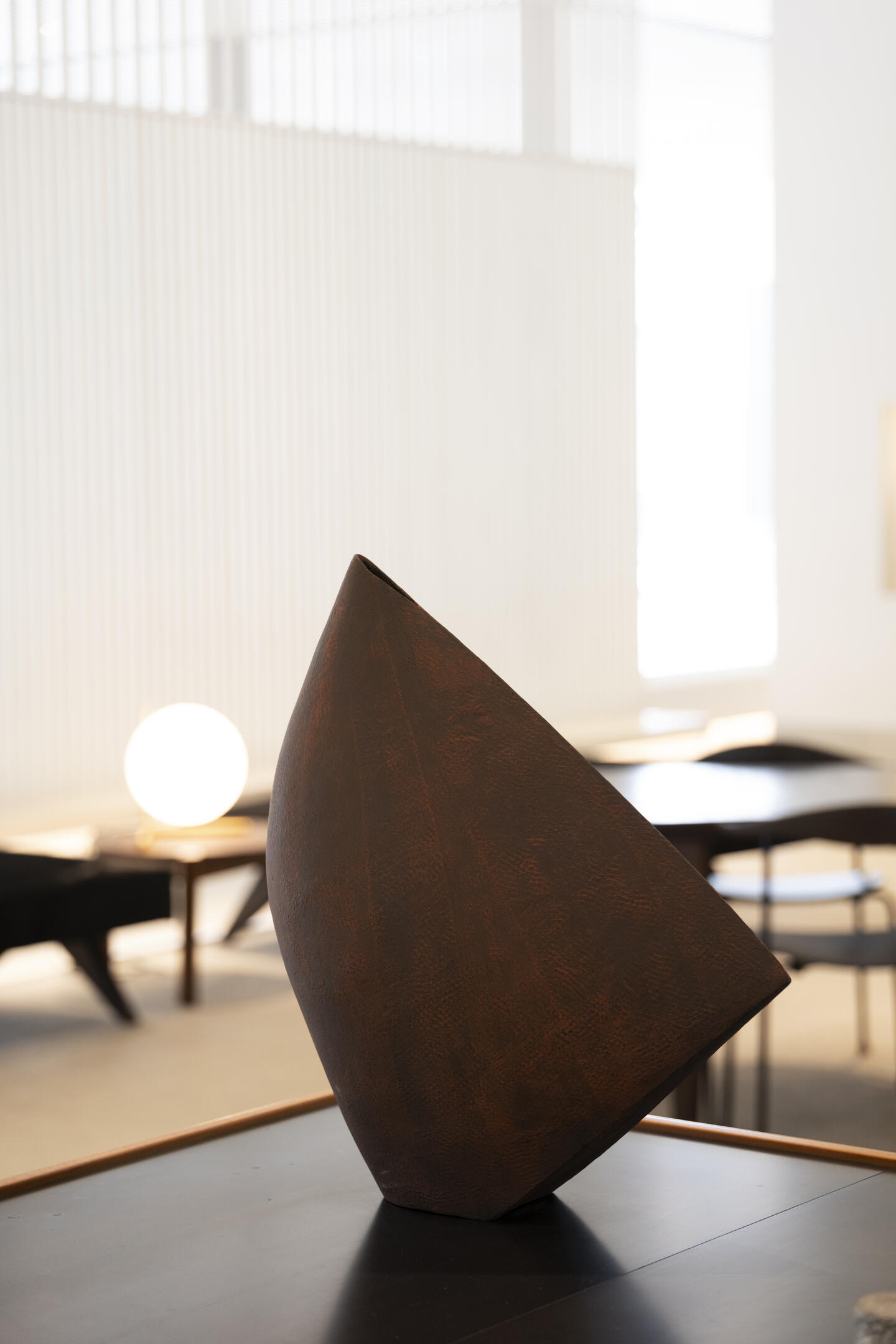Collector and Patron Woon Kyung Lee Wants to Give Korean Artists an International Platform
The Frieze Seoul Host Committee member explains why the forthcoming fair is a moment ‘to introduce our K-Culture to the world.’
The Frieze Seoul Host Committee member explains why the forthcoming fair is a moment ‘to introduce our K-Culture to the world.’

Matthew McLean: How did you get involved in the art world?
Woon Kyung Lee: Born in Busan, but raised and educated in Seoul, I majored in French Language and Literature at Ewha Womans University. After graduating, I became involved with a number of different organizations in various capacities, including my role as governor of Soroptimist International Korea Region, the largest global volunteer organization for women in the UN. Beyond that, I have always been very interested in supporting cultural organizations. I currently serve as executive director for Sejong Soloists, a global chamber orchestra, and as operations director for Arumjigi Culture Keepers Foundation, a private non-profit dedicated to preserving traditional Korean culture and showcasing its beauty to the world. I am also vice president of the Membership Society at Korea’s National Museum of Modern and Contemporary Art, an active international council member for Fondation Maeght, and an international patron for M+ museum. In addition, I successfully led Art Busan as chair of the organizing committee.

MM: What was the first piece of art that really mattered to you?
WKL: Since my father worked in the shipping industry, I had the opportunity to travel abroad when I was young. I remember visiting an impressionist exhibition at a museum in Japan and being completely captivated by the beautiful scenes depicted in the paintings. Among them, I was most intrigued by Claude Monet’s The Water Lily Pond (1899), which I thought was utterly beautiful. I’ll never forget that moment.
MM: When did you start to think seriously about collecting art?
WKL: After I got married, my father-in-law gifted me five artworks – by Byun Kwan Sik, Byun Jong-ha, Lee Sang-beom, Park Soo-Keun and Choi YoungRim – and told me to study them. This inspired me to sign up for the contemporary art patrons programme at the National Museum of Modern and Contemporary Art in Gwacheon, which was the first of its kind when it launched in 1986. That is how I became fascinated by 20th century American abstraction.
MM: Who has inspired you on this journey?
WKL: My father-in-law has been a huge inspiration. With his excellent eye for Korean antiques, he acquired ceramics collections from the Goryeo Dynasty, as well as calligraphy, paintings and traditional furniture from the Joseon Dynasty. I wanted to follow in his footsteps in terms of his knowledge and insight into art.
MM: What was your first acquisition and what drew you to it?
WKL: The first piece I bought was Untitled 90-9 Donaldson (1990) by Donald Judd. I was completely captivated by Judd’s work when I first encountered it: his perfect architectural arrangements of simple, geometric shapes in carefully chosen colours creating a harmonious and magical new space. I was so fascinated by his work that I decided to start collecting it.

MM: How would you describe your collection today?
WKL: My collection focuses on American and European abstract and conceptual art from the 1970s to the 1990s. Rather than acquiring one or two works by a broad range of artists, however, I have several pieces by a select number of artists, which means I can change the display from time to time with different works by the same artist. There is no specific theme for the collection, but it is driven by a strong modernist tendency.
MM: How do you decide on a new acquisition?
WKL: Obviously, I’m very interested in art and I do my own research, but there’s nothing like listening to expert advice. Luckily, I have some very good art historian and curator friends with whom I have informative conversations about new and upcoming artists.
MM: What would be your advice to someone interested in acquiring art who hasn’t collected before?
WKL: Collecting should invariably start from your curiosity and passion for art. In that sense, visiting exhibitions and studying art are the most important things you can do. The more time you spend looking at an exhibition, the better you will be able to understand the works and organize your thoughts on the pieces you want to collect. One tip would be to read up on the artists before you go to a show. Another good way to develop a sense of the art market is to attend lectures by curators, art dealers and more established collectors.
MM: Which artists have recently come on your radar as ones to watch?
WKL: In recent years, Korean art has become a focus within the international artworld – largely due to the attention garnered by the monochromatic Dansaekhwa paintings of Yoon Hyung-geun, Park Seo Bo and Lee Woo Hwan. However, there are many other talented Korean artists who have not yet been recognized on the global stage. These include Lee Bae, whose work I have been paying a lot of attention to recently. Dividing his time between Korea and France, Lee has developed a practice that combines elements of Korean abstraction with the experimental approach of European contemporary art. He primarily utilizes charcoal in works that carry echoes of traditional Korean calligraphy and, as a result, is often referred to as the ‘charcoal artist’. Since charcoal is a natural product that varies in hue and reflectivity, his works appear to transmute depending on the viewer’s perspective. In Lee’s practice, the element of chance combines with the artist’s intentions to accommodate the viewer’s subjectivity.

MM: Do you feel a particular responsibility to collect works by Korean artists as well as international ones?
WKL: Yes, I do. Despite the fact that the hallyu (Korean Wave) has seen South Korean culture increasingly rise to global prominence since the 1990s – a case in point being the Dansaekhwa movement – I still believe there are many great Korean artists who haven’t yet been given an international platform, and this feels like a good moment to drive that agenda because there is such widespread interest in Korea.
MM: There seems to be a unique relationship in Korea between individual art collecting and corporate patronage. Can you give an overview of how these two strands are connected?
WKL: Personally, I see individual art collection and corporate patronage as separate entities. However, there are some occasions when an individual might sponsor a corporation in order to promote positive artistic interactions.
MM: How do you support the broader arts ecosystem in Seoul and beyond?
WKL: In my roles as vice president of the Membership Society for Korea’s National Museum of Modern and Contemporary Art and as chair of the organizing committee for Art Busan, I hope to introduce Korean art to many more international museum directors, curators, writers and collectors, as well as arranging meetings with Korean experts.

MM: In your view, what makes Seoul such a vibrant centre for art?
WKL: MZ generation [Millenial-Generation Z] collectors are very active in Korea, showing off their taste in art by sharing their collections on social media. This is a big change from previous generations, who tended to keep their collections private. Also, by acquiring works from relatively inexpensive young artists, the MZ generation is expanding opportunities for new names to enter the market.
MM: We are honoured to have you as a member of our host committee for the first Frieze Seoul. What are you most looking forward to about this inaugural event?
WKL: First of all, I’m very excited that we will get to see some great international artworks in Seoul. At the same time, I’m also delighted that influential global collectors will be able to view some incredible Korean works of art at both Frieze Seoul and at KIAF, which opens at the same time. I believe this is a wonderful opportunity to introduce our K-Culture, K-Art and K-Food to the world.
MM: Finally, if you could keep only one piece in your collection, what would it be?
WKL: I think it would have to be Mark Rothko’s Light Red Over Black [1957], which was exhibited at the Venice Biennale in 1958. Unlike Rothko’s previous works, this piece features a dark screen that explores the interaction between light and depth. That vast screen and the colours of the work have the power to touch the heart.
Main image: Lee Bae, Brushstroke, 2020
























